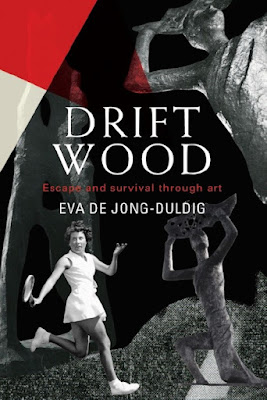married in 1933
I didn’t enjoy the 1967 diary of Channon, so I will reblog Nigel Jones’ review of Henry Chips Channon: The Diaries 1918-38 Vol 1 (ed Simon Heffer). And Rachel Cooke’s review. Then I will add my own comments.
Henry Chips Channon (1897–1958) grew up in a wealthy Chicago family. His mother had connections in Paris, and the first Chips diary began in Paris in 1918, where he became an honorary attache at the US embassy. He had dinners with Marcel Proust and Jean Cocteau, and drove to Ypres to see the trenches. Then he moved to Oxford to study and to make useful connections; and then to London, where he shared a house with Paul of Yugoslavia and Viscount Gage, and set about attracting Lord Curzon, the foreign secretary.
Channon loved royal and aristocratic society, and had a minor political career as a Tory MP. He increased his income by marrying Honor, daughter of Lord Iveagh of the Guinness brewing dynasty. With their marriage in 1933, the gates to a lavish world were flung fully open. His father-in-law helped him to buy his house in Belgravia, with its grand dining room, decorated to resemble Amalienburg, the rococo royal hunting lodge near Munich. The couple’s son Paul inherited the Southend parliamentary seat and became a Minister in Thatcher’s government.
But Chips’ chief legacy was his voluminous diaries. Snobbish to a glaring fault, his hatreds and his loves were equally intense. An apostle of appeasement with Germany and a loather of his native land to an insane degree, Channon was a difficult man to like. Such was the vitriol of his poison pen that the only previous edition of his diaries, published in 1967 when most of his subjects were still alive, was a heavily redacted version. It was edited by Tory MP Robert James, in one slim volume that caused a sensation.
Now journalist Simon Heffer completed a huge task, assembling the surviving diaries and editing them. In 2018 Heffer was asked by Channon’s grandchildren to open grandpa’s unfashionable, racist and reactionary political views, and his indiscreet glimpses into his own private life and those of his friends. The mammoth job took Heffer 3 years! The first large volume was published in March 2021; the second and third will follow.
Read of the frequent visits to London brothels accompanied by his buddy Lord Gage, with whom he was cloyingly besotted. Channon sampled le vice anglais via a birching from a German dominatrix and by a paedophile occultist scholar. He also had a gay affair with Prince Paul, pro-Nazi regent of Yugoslavia.
Channon’ sympathy for the Nazi regime was seen when he attended the 1936 Berlin Olympics with wife Honor and their smart friends. They enjoyed lavish parties thrown by Goering & Goebbels and “visited a labour camp which looked tidy: the boys fair, healthy and sunburned. England could learn many a lesson from Nazi Germany. I cannot understand the English dislike and suspicion of the Nazi regime. O England wake up! Germany was fighting our battle.”
At home Channon was engulfed in the Abdication crisis. A friend of King Edward VIII and Wallis Simpson, he had an insider’s view of events and mourned the king’s departure. Despite the author’s snobbery and nasty opinions, the diaries were vital for those interested in interwar Britain’s political-social history.
in Channon’s house, Belgrave Square, 1947
TLS
King George VI, Channon wrote, was a well-meaning bore and no patch at all on his brother King Edward VIII/Duke of Windsor. Edward was unintellectual, uneducated and badly bred, but would have made a brilliant King notwithstanding his Nazi leanings. How did Channon know? He and Wallis Simpson were both Americans who became friends, both working their way into high society. In 1935, the noted hostess Emerald Cunard was trying to recruit friends for Wallis; Chips was her first choice.
He was a natural journalist and had lots of highly privileged information. Heffer’s footnotes often resembled a page of Burke’s peerage eg he had a fling with actress Tallulah Bankhead and dined with HG Wells, Evelyn Waugh, Gore Vidal and Tennessee Williams.
Channon never thrived in politics. The peak of his success was to be parliamentary private secretary to Rab Butler, when he was Under-Secretary of State at the Foreign Office. His real genius was for friendship and he was desperately keen to be liked.
But his loyalty also led him astray. He was raving about Neville Chamberlain, before Chamberlain travelled to meet Hitler in 1938 as a bulwark against Bolshevism; Channon believed his hero had saved the world. What about Channon’s attitude to the Nazis? It was appalling to see the full extent of the enthusiasm of the British ruling classes for that regime in the 1930s.
published by Hutchinson 2021
My concerns
Edited by Simon Heffer without redaction, the 2021 diary revealed more sordid detail about British high society and their sex lives. But _I_ need to know much more about what Channon thought the dynamism and organisation of Nazi Germany and what he thought their future would be. He was not an ignorant man but he expected Hitler to bring back the Kaiser and his Hohenzollern dynasty. By Nov 1935, he asked himself as an MP: “Shall I have the courage to raise my lonely voice in favour of Germany in the House?” After dinner with anti-appeasers like Duff Cooper, he told his diary: “I longed to cry out Heil Hitler! Secretly, I am pro-German and prefer even the Nazis to the French.”





















































.png)





























.jpg)


















